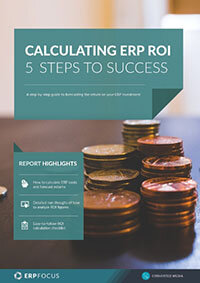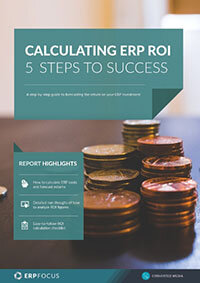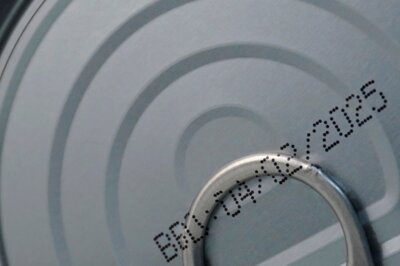Using ERP to improve profitability
We've previously looked at using ERP to reduce costs, now let's see how ERP can improve profitability because reducing costs and improving profitability are not necessarily the same thing and can, indeed, sometimes conflict. Take for example reducing product costs. A company might try to achieve this in two ways: by making bigger batches so that machine set-up costs are spread further, or by buying production materials from a cheaper supplier.
Manufacturing in bigger batches appears to be a good idea but, for products that don't sell in large numbers, it can lead to customers having to wait until additional orders arrive for products that they want; so delivery lead times may be extended and may also be unpredictable. And buying from cheaper suppliers might not be a good idea because often those suppliers will be cheap for a reason: perhaps their quality is poor or maybe their delivery promises are unreliable. When companies buy from unreliable suppliers, there is usually a price to pay.
When looking at improving profitability, there are two things that need to be considered: customer profitability and product profitability.
Customer profitability
When it comes to profitability, not all customers are created equal. The differences generally relate to:
- delivery costs,
- specific requirements, and
- quality expectations.
Looking at delivery costs first; not all companies deliver ex-works, and the cost of delivering to particular customers can be significant. If full loads are dispatched or a third-party logistics (3PL) company is used, these costs can be easily calculated but when one truck is carrying multiple deliveries to multiple customers in multiple locations, things will not be so clear cut. However, even then, your transport department will know which delivery points are difficult and ERP can generate reports showing the gross profitability (i.e. excluding delivery costs) of those customers. Some may have multiple delivery points but companies can still look at profitability and delivery costs and gauge which customers are worth keeping and which may not be.
Make sure your ERP selection goes to plan using this full ERP RFP guide
There can be other customer-specific costs beyond transport, such as special labeling or packaging. These costs are frequently 'lost' if the activity is carried out in the dispatch department but they should not be because they are real costs and costs that ERP can easily measure and record by, for example, raising Works Orders for such activities.
Another consideration is that, when buying items that have a limited shelf life, some customers demand a minimum shelf life remaining on their deliveries. Generally, this does not cause problems but occasionally companies find that they have to put in place systems and procedures to guarantee things and this can incur a cost.
Lastly, but perhaps most importantly, some customers can have unrealistic quality expectations. When a customer rejects a delivery, costs can rack up quickly. They will vary from situation to situation but will include at least some of the following:
- cost of collection,
- cost of inspection,
- cost of rework or replacement (when product is customer-specific or has a limited shelf life, it may not be possible to offset against these costs by returning rejected items to stock, even if there is nothing actually wrong with them), and
- the cost of re-delivery.
There is also a major cost that manufacturing companies don't always realize that they are occurring when they manufacture replacements. When a company doesn't have spare capacity, inserting a replacement order into the production schedule causes disruption. Sometimes that problem can be resolved by working overtime (at a cost) but sometimes it can be necessary to reschedule other orders to free up capacity. That has a cost also, albeit one that is practically impossible to measure, because it means disappointing or letting down other customers and we can be sure that, at some point, those customers will react by taking their business elsewhere.
Product profitability
As with customers, Pareto's Rule comes into play and this time it tells us that 80% of profit is generated by 20% of products. An ERP system has all the data needed to identify which products contribute little to profitability and which, in fact, may even be unprofitable. It is worth remembering, when looking at this, that it may also be necessary to identify products that have a higher than normal rate of rejection and return, as this can quickly destroy the profitability of items. A good ERP system will have full return and repair/replacement functionality to allow these costs to be accurately measured, recorded, and analyzed.
It is essential when gauging product profitability that the true cost of the product is known (see more on the various ERP costing options in detail). In truth, many companies already know their worst performers in this category but choose not to do anything about it. There are multiple reasons for this: one is that, when manufacturing companies have more capacity than orders, they are happy to sell anything just to keep the factory working and, indeed, marginal costing says that, under certain circumstances, it can be acceptable to cost product at material content only, as labor and overhead costs are committed anyway. That is, however, a decision that absolutely must be made at C-level because its effects can be far-reaching and many companies have folded by over-using it. (Here we have discussed a situation where companies have more capacity than orders but, turning that around when companies have more orders than capacity, identifying the most profitable products, and making sure they get made, is also a valid objective.)
The second reason is that many companies, perhaps of necessity, measure their sales departments, and sales staff, on sales quantity or value and not on the profitability of those orders. So orders are accepted at the best price that can be obtained regardless of whether or not that price returns a profit. This can be a valid approach but, equally, it may not be, depending on other factors discussed here.
Lastly, there can be a belief that, “Customer A won't buy product X (a very profitable product) unless we supply them with product Y (a marginal product) also”. This may be true, but it is also a very good reason to measure customer profitability also and to make a balanced judgment (again at C-level) on whether selling to particular customers actually makes sense.
Returning to something previously mentioned; some problems with product profitability relate to items that are sold in small quantities, so clearly increasing sales can help. Increasing sales by reducing sales prices is sometimes possible but companies have to do the math carefully. Another option is to use ERP to find out if some customers who used to buy particular products are no longer doing so. If these customers can be identified, then it opens up the possibility of contacting them to find out why they are no longer buying; remembering that the answer may not be price but something else like delivery lead time.
Conclusion
Clearly, a good ERP system can help companies improve their profitability but cost reduction is a more popular goal for most, and there are two main reasons for that. One is that cost reduction is a concept that is easier to understand because improving profitability seems, by comparison, rather nebulous. It doesn't state up front how it is to be achieved, making it harder to sell as an internal project and additionally many people, when they think of profitability improvement, think only of cost reduction.
The second reason is that very frequently profitability improvement means doing things that can appear negative. For example; when both individual customers and individual products are identified as being unprofitable, and all ways of making them profitable have either failed or been ruled out, there is nothing else to do but to cull them. That is not always popular, because it can mean discarding long-term customers and it can mean discarding excellent products (and salespeople who are measured on sales volume or value will not be happy with either).
But it is hard to justify selling to customers at a loss, and it is hard to justify selling products at a loss. Yes; as discussed earlier, there can be occasions when doing so can be justified but that is a decision that requires careful thought at the most senior level.
When looking at improving profitability, companies can be faced with difficult decisions but good ERP systems have the data needed to make those decisions and then to validate the choices made.
Free white paper

Calculating ERP ROI: 5 steps to success
Calculate your new ERP's financial benefits with this comprehensive guide

Featured white papers
Related articles
-

What are the benefits of manufacturing ERP?
The advantages of ERP for manufacturing businesses
-

Secret KPI: Why Your ERP Implementation Team Matters More Than Software
Learn how Godlan ensures successful ERP implementation for manufacturers with proven strategies &...
-
![Three direct links between ERP and manufacturing revenue [image by Snowing on Freepik] Three direct links between ERP and manufacturing revenue [image by Snowing on Freepik]](/pictures/W1siZiIsIjIwMjUvMDEvMjAva2ZwYjAzb3gzX1RocmVlX2RpcmVjdF9saW5rc19iZXR3ZWVuX0VSUF9hbmRfbWFudWZhY3R1cmluZ19yZXZlbnVlX2ltYWdlX2J5X1Nub3dpbmdfb25fRnJlZXBpa18uanBnIl0sWyJwIiwidGh1bWIiLCI0MDB4MjY2IyJdLFsicCIsImVuY29kZSIsImpwZyIsIi1xdWFsaXR5IDg1Il1d/Three%20direct%20links%20between%20ERP%20and%20manufacturing%20revenue%20%5Bimage%20by%20Snowing%20on%20Freepik%5D.jpg?sha=b45b02a140cc8680)
Three direct links between ERP and manufacturing revenue
What you need to know to help you achieve a return on your manufacturing ERP investment


